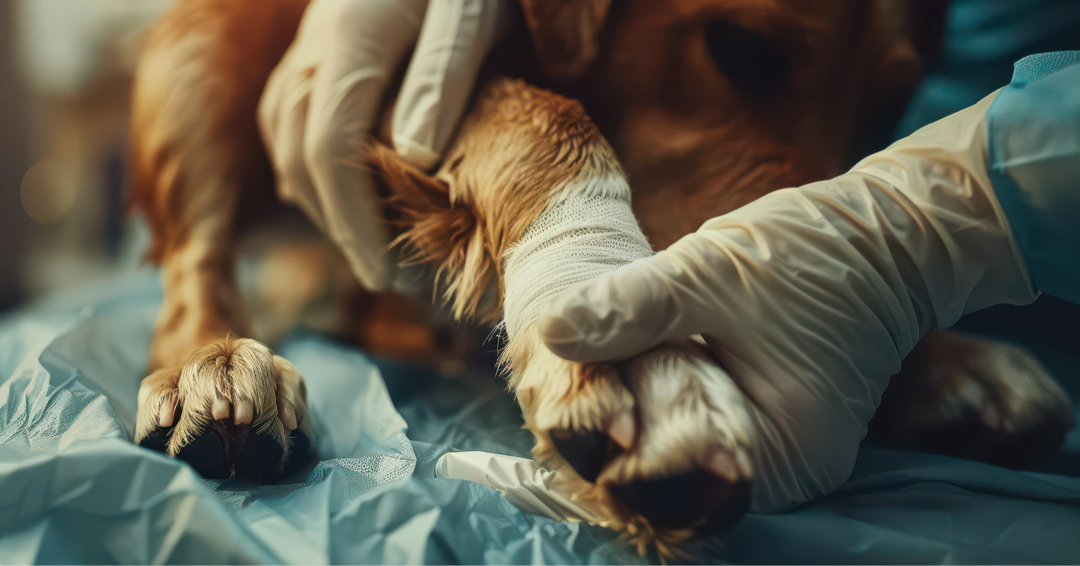
Pet first aid: everything you need to know
Sarah PromShare
Pet first aid is crucial for ensuring the health and safety of your furry companions in case of emergencies.
Be Prepared
Have a pet first aid kit: include items such as gauze pads, adhesive tape, antiseptic wipes, tweezers, scissors, a thermometer, hydrogen peroxide (to induce vomiting), and a pet first aid manual. Additional items to include are a muzzle (to prevent biting), sterile saline solution for flushing wounds or eyes, a blanket or towel for warmth or restraint, and contact information for your veterinarian and local emergency veterinary clinic.
Regularly check your first aid kit to ensure that supplies are not expired and replace any items that have been used.
Have a first aid kit readily available in your home and car.
Know the Basics
Pet first aid courses are available through veterinary clinics, animal shelters, and organizations such as the American Red Cross. These courses cover topics such as recognizing signs of illness or injury, administering CPR, and treating common emergencies.
The American Red Cross offers a Pet First Aid app that provides step-by-step instructions and videos for pet first aid procedures. It's a handy resource to have on your smartphone.
Stay Calm
Your pet can pick up on your emotions, so remaining calm can help prevent them from becoming more agitated or fearful.
Take deep breaths and focus on the task at hand. Speak to your pet in a soothing voice to reassure them.
Assess the Situation
Look for any potential dangers to yourself or your pet, such as traffic, aggressive animals, or hazardous substances.
Determine if your pet is conscious, breathing, and responsive. Check for any obvious signs of injury, such as bleeding, difficulty breathing, or limping.
Handle with Care
Approach your pet slowly and gently to avoid startling them. If they are in pain, they may react defensively.
If your pet is aggressive or fearful, use a towel or blanket to safely restrain them or create a barrier between you and the pet.
Control Bleeding
Apply firm, direct pressure to the wound using a clean cloth or gauze pad. Elevate the injured area if possible to reduce blood flow.
If bleeding is severe or does not stop after several minutes of pressure, seek immediate veterinary attention.
Stabilize Injuries
If your pet has a suspected fracture, immobilize the limb using a splint made from padded materials such as cardboard or towels. Secure the splint in place using bandages or tape.
Be cautious when handling your pet with a suspected fracture, as movement can cause further injury and pain.
Address Respiratory Distress
If your pet is struggling to breathe, check for any obstructions in the airway, such as foreign objects or vomit. Use your fingers to clear the airway if necessary.
If your pet is not breathing, perform rescue breathing by gently extending their head and neck, closing their mouth, and breathing into their nostrils until you see their chest rise.
Seek Veterinary Care
Even if you are able to stabilize your pet's condition, it's essential to seek veterinary care as soon as possible. Some injuries and illnesses may not be immediately apparent and require professional diagnosis and treatment.
Contact your veterinarian or local emergency veterinary clinic for guidance on the next steps and transportation instructions.
Preventative Measures
Keep your pet's vaccinations up-to-date to protect them from preventable diseases.
Schedule regular veterinary check-ups to monitor your pet's health and detect any potential issues early.
Pet-proof your home by removing or securing any hazards such as toxic plants, chemicals, small objects that could be swallowed, and electrical cords.
Supervise your pet during outdoor activities to prevent injuries or encounters with wildlife.
By being proactive and knowledgeable about pet first aid, you can effectively respond to emergencies and provide the best care for your furry friend. Remember that while first aid can help stabilize your pet's condition, professional veterinary care is always necessary for serious or life-threatening injuries and illnesses.
